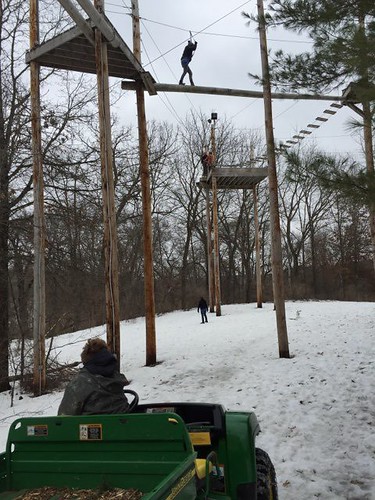Yzed the ZM241385 site phylogenetic structure of forest plots applying various approaches, in
Yzed the phylogenetic structure of forest plots applying unique solutions, to be able to capture distinct properties from the phylogenetic structure with the plots. Due to the fact our speciesbysites matrix had only occurrences, no strategies employed PubMed ID:https://www.ncbi.nlm.nih.gov/pubmed/24367588 took into account species abundances. Phylogenetic diversity (PD) was computed because the total sum of branch lengths for species occurring in every single plot [46]. Phylogenetic clusteringoverdispersion was measured using the two metrics proposed by Webb et al. [47]: imply phylogenetic distances (MPD) among the species present in each and every plot, and imply phylogenetic distance amongst every single species and its phylogenetically nearest species (MNTD). For PD, MPD and MNTD values we computed standardized effect  sizes (SES) according to 999 null values obtained from a null model that keeps the species composition in the plot while the position of every species in the phylogenetic tree for the regional species pool (defined by all species present within the dataset) is freely shuffled (“taxa.label” model), as follows: SES Observed worth (x){Mean null value (x0 ) Standard deviation of null values (s0 )Building a phylogenetic tree for Atlantic Forest plantsTo define phylogenetic affinities among plant species we used the phylogenetic hypothesis of APG III [40] for angiosperms and the hypothesis of Burleigh et al. [4] for gymnosperms, which solve phylogenetic relationships to the family level. For this, we used the megatree R2020829 (available at https:githubcamwebb treeoftreesblobmastermegatreesR2020829.new), removed outdated intrafamilial resolution and included the gymnosperms tree into the megatree. Since phylogenetic uncertainties influence different phylogenetic metrics, to reach intrafamilial node resolution we also included 5 constructed angiosperms families’ trees based on recent studies (families with more than one species and for which reliable phylogenetic hypotheses are available) (references in Appendix S2). This procedure solved genera relationships for 84 of the species in the database. We defined branch lengths using node age estimates proposed by Bell et al. [42] and the age estimates of Magallon et al. [43] for clades older than angiosperms, using only clade age estimates that were consistent with the APG III tree topology. We also included clade age estimates within some of the 5 families added to the megatree (references in Appendix S2). Undated nodes were adjusted using the BLADJ algorithm of Phylocom 4.2 software [44] and the phylogenetic tree was obtained using the Phylomatic 2 module of Phylocom 4.2 software [45]. Then we computed the phylogenetic pairwise patristic distances between species.PLOS ONE plosone.orgHereafter, we refer only to the standardized values of theses methods, respectively SES.PD, NRI (net relatedness index) and NTI (nearest taxon index). Positive or negative SES.PD values indicate, respectively, phylogenetic diversity higher or lower than expected by the null model. Positive or negative NRINTI values indicate, respectively, phylogenetic clustering or overdispersion of species in the plot. While NRI captures the influence of deeper phylogenetic nodes to the phylogenetic structure of the plot, NTI characterizes the effect of shallower phylogenetic nodes [47]. Phylogenetic structure measures were computed in the R environment (available at http:rproject.org), using the package picante .6 ([48], available at http:cran.at.rproject. orgwebpackagespicante). We compared the forest types in relation to.
sizes (SES) according to 999 null values obtained from a null model that keeps the species composition in the plot while the position of every species in the phylogenetic tree for the regional species pool (defined by all species present within the dataset) is freely shuffled (“taxa.label” model), as follows: SES Observed worth (x){Mean null value (x0 ) Standard deviation of null values (s0 )Building a phylogenetic tree for Atlantic Forest plantsTo define phylogenetic affinities among plant species we used the phylogenetic hypothesis of APG III [40] for angiosperms and the hypothesis of Burleigh et al. [4] for gymnosperms, which solve phylogenetic relationships to the family level. For this, we used the megatree R2020829 (available at https:githubcamwebb treeoftreesblobmastermegatreesR2020829.new), removed outdated intrafamilial resolution and included the gymnosperms tree into the megatree. Since phylogenetic uncertainties influence different phylogenetic metrics, to reach intrafamilial node resolution we also included 5 constructed angiosperms families’ trees based on recent studies (families with more than one species and for which reliable phylogenetic hypotheses are available) (references in Appendix S2). This procedure solved genera relationships for 84 of the species in the database. We defined branch lengths using node age estimates proposed by Bell et al. [42] and the age estimates of Magallon et al. [43] for clades older than angiosperms, using only clade age estimates that were consistent with the APG III tree topology. We also included clade age estimates within some of the 5 families added to the megatree (references in Appendix S2). Undated nodes were adjusted using the BLADJ algorithm of Phylocom 4.2 software [44] and the phylogenetic tree was obtained using the Phylomatic 2 module of Phylocom 4.2 software [45]. Then we computed the phylogenetic pairwise patristic distances between species.PLOS ONE plosone.orgHereafter, we refer only to the standardized values of theses methods, respectively SES.PD, NRI (net relatedness index) and NTI (nearest taxon index). Positive or negative SES.PD values indicate, respectively, phylogenetic diversity higher or lower than expected by the null model. Positive or negative NRINTI values indicate, respectively, phylogenetic clustering or overdispersion of species in the plot. While NRI captures the influence of deeper phylogenetic nodes to the phylogenetic structure of the plot, NTI characterizes the effect of shallower phylogenetic nodes [47]. Phylogenetic structure measures were computed in the R environment (available at http:rproject.org), using the package picante .6 ([48], available at http:cran.at.rproject. orgwebpackagespicante). We compared the forest types in relation to.
Calcimimetic agent
Just another WordPress site
